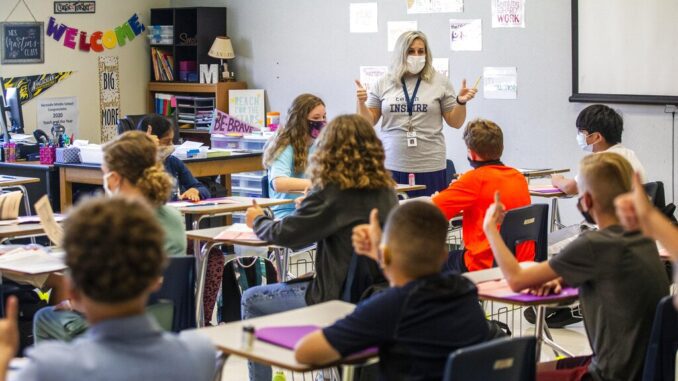
RALEIGH — When the COVID-19 pandemic hit their rural community, Weldon City Schools raced to give its pupils the tools they needed to quickly transition to virtual learning.
The district set up internet hotspots for those without connectivity at home and had staff deliver meals to students. It also drew on some of the funds to improve air quality in three schools, install touchless bathroom faucets and buy lots of cleaning supplies and protective equipment.
The public school system of less than 800 students is among North Carolina’s largest recipients of federal COVID-19 assistance since the start of the pandemic, securing nearly $11,000 per pupil, a total of more than $8.7 million.
Since March 2020, the federal government has provided $190 billion in pandemic aid to schools, an amount that is more than four times what the U.S. Education Department spends on K-12 schools in a typical year. The Associated Press, relying on data published or provided by states and the federal government, tallied how much money was granted to nearly every school district in the country.
The AP tracked about $155 billion sent to states to distribute among schools since last year, including general pandemic relief that some states shared with their schools.
The aid averages nearly $2,800 per student, but it varies widely by district and state, according to the AP’s analysis. The latest and largest round of funding, totaling $123 billion, is still being distributed and gives schools enormous flexibility in how to spend it over three years, a window that many district officials say is short for such a large amount of money.
In North Carolina, rural communities received substantially more money per student than heavily populated districts. Weldon was among three public school districts in the state that received more than $10,000 per student, second only to Warren County, which took in more than $33 million, or almost $18,000 for every student.
While Warren County Schools Superintendent Keith Sutton believes there’s a discrepancy in the amount the state has told the federal government it has distributed to the system, data his office shared with the AP shows it spent nearly $475,000 on computers and software. More than $684,000 went to workers who assisted with a summer extension program to address pandemic-fueled learning loss.
North Carolina’s largest district, Wake County Public Schools, got about $2,100 per student for a total of $347 million. Nationwide, high-poverty areas received much more under the funding formula.
Charlotte-Mecklenburg Schools, which is similarly sized, got $488 million, or roughly $3,300 per child.
In Wake County, 28% of enrolled students qualified for free and reduced lunch last year.
The state’s third-largest district, Guilford County Schools, has less than half as many students as Wake but got nearly as much money, securing more than $306 million, or about $4,200 per pupil. More than 66% of students qualified for free and reduced lunch, as of April 2020, according to the district.
The largest share of its planned spending through fiscal year 2025 will go toward recruiting, retaining and rewarding staff. More than $50 million will be spent for those purposes, while another $46 million will go to accelerate learning, particularly through summer school and a longer school year to address learning loss. It also expects to spend $39 million on instruction materials and resources, $37 million to close the digital divide, $35 million to build out capacity at a professional development center and $26 million on ventilation and improved air quality.



